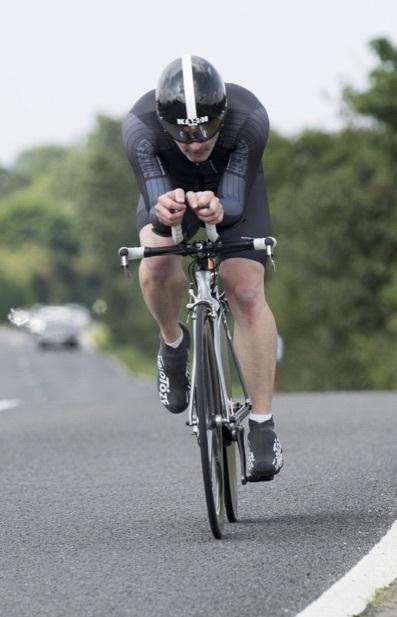An introduction to the Time Trial - The Race of Truth
03rd October 2017 - 20:23
Ever thought about taking part in a time trial? #TeamTCUK coach, Ady Dench, offers his own personal insight into whether carbon bling will make you go faster and why racing on the A1 isn't for everyone!
One of the best ways of getting in a quality bike session and to test your bike set up and position is to enter some time trials. For those of you who haven’t had the pleasure of the wonderful world of ‘testing’ here is a brief guide on how to enter and what to expect.
Time trials come in a number of distances with 10, 25 and 50 milers being the most common. There are also 100 milers and 12 hour TTs (ride as far as you can in that time), as well as team time trials and hill climbs to look for. Many ‘testers’ look for fast courses, which tend to be on flattish dual carriage ways. There are also sporting courses (SPOCO) which tend to be on quieter more undulating roads. Racing on roads like the A1 isn’t for everyone!
All courses are listed with and passed for true distance by the Cycling Time Trials organisation (CTT), which is the governing body for most time trials in this country. The CTT is not a branch of British Cycling.
Now comes the complicated bit! Courses aren’t given a name they are known by a series of letters and numbers. This stems from back in the days when racing on the road was illegal. Cyclists would arrange clandestine meetings often early in the morning, where riders would set off at intervals (so not racing!) in order to record the fastest time of the day.
For example a couple of local courses to me are known as the O11/25 (Hatfield 25 mile course) and another is the, O10/5 (Cuckney 10 mile course - see photo below). Every year around the end of January the CTT publish a handbook with all the courses and TTs in for the forthcoming year. Races are also listed on the CTT web site http://www.cyclingtimetrials.org.uk/Home

There are ‘club’ and ‘open’ time trials. At a club night all you need to do is turn up and pay your money on the night. You do not have to be a member of the club putting the race on. It usually costs about £3 which includes a levy to the CTT. These are very friendly affairs.
‘Open’ events have to be entered in advance, and some races still require you to send a paper entry form with a cheque to cover your entry to the organiser. More and more clubs are accepting on line entries now. You need to be a member of a CTT affiliated club to enter an open event. Most cycling clubs and many triathlon clubs take up an annual affiliation. Entries commonly cost £9-£10 and the forms and cheque have to be in the hands of the organiser at least 10 days before the day of the race. Entry forms will ask for your fastest time at a given distance and these times are used to seed riders on the start sheet.
Fast courses will often be oversubscribed and the fastest times will be accepted with some reserves. If you get accepted for a TT and you can’t make it, you should always let the organiser know as there may be a reserve waiting for a place.
You can ride any road legal bike for a TT, but as most of us know, there is a whole load of carbon bling which many use to go faster. DO NOT let this put you off especially at local club events where riders of all shapes and sizes take part and on bikes of all ages and types (although I wouldn’t recommend nobbly tyres on a mountain bike).
You will need to warm up before your ride. Most people ride the course as a warm up at a club night, whereas at an open event many people will be on turbo trainers or rollers for a good 20 mins or so before their ride. You are very likely to cramp without a warm up…speaking from experience here!
In your first TT, you will probably go off too hard (adrenalin has a lot to answer for!) and it will hurt from quite early on. That said you will probably be riding faster than you’ve ever ridden before! It’s amazing how pinning a number on your back and having your ride timed can make you push that little bit harder. Try and stay low and aero, concentrate on the pedal stoke and staying relaxed and remember to keep an eye on the traffic and what’s going on around you.